Do you remember your school uniform? Do you think maybe it shouldn’t have been changed? All the same, graduates dress up in uniform dresses for the last bell. Or are today's students' outfits better? Let's find out!
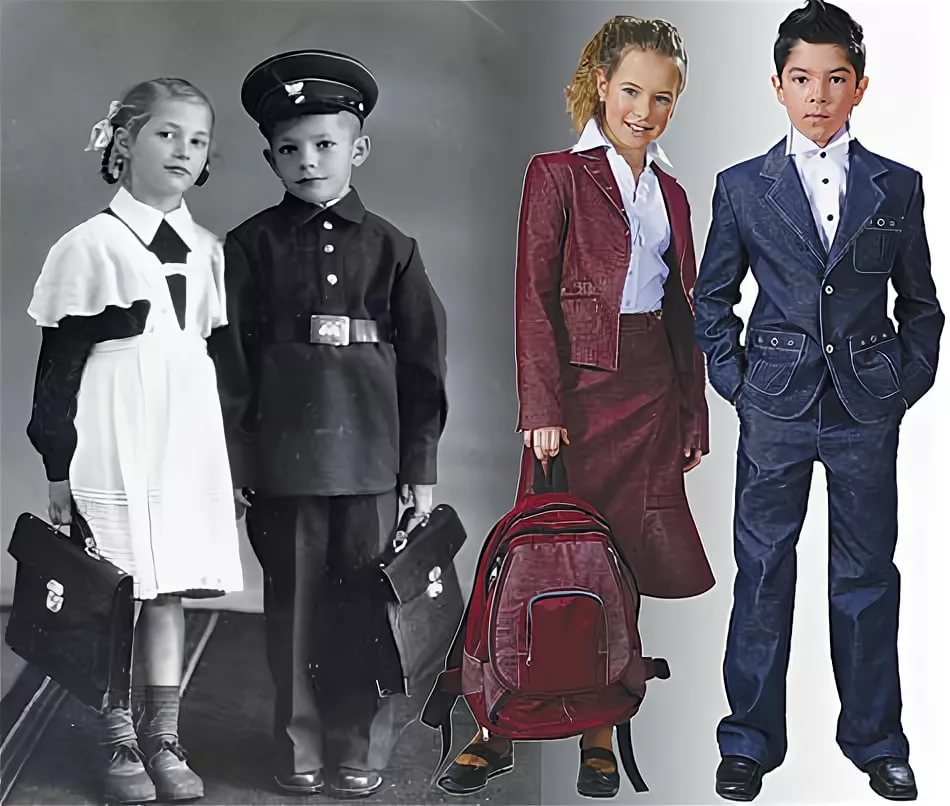
What did students of Soviet schools wear?
Maybe it seems to you that the Soviet Union has always had uniforms. This is not entirely true. Pre-revolutionary student suits were abolished by the new government, and new ones did not appear immediately, but after the war, in 1948 year.
What were the returned student clothes like?
Outwardly, it was very reminiscent of the one worn by boys and girls back in pre-revolutionary times.
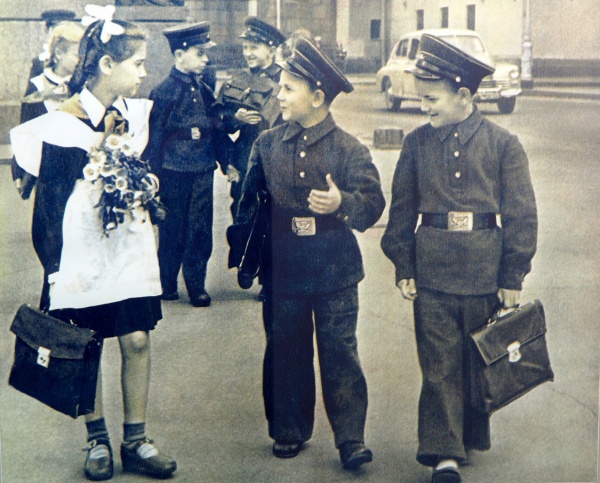
Boys must have been worn gray trousers and shirt. In addition - a wide belt with a large buckle, and a cap with a cockade as a headdress.
For girls sewed brown clothes. It was dress below the knee with neat cuffs and lace collars.
Important! Any experiments with the length or style of the dress were prohibited. They were severely punished for this.
Must be worn over the dress apron: everyday - black, festive - white. It was tied at the back with a bow.
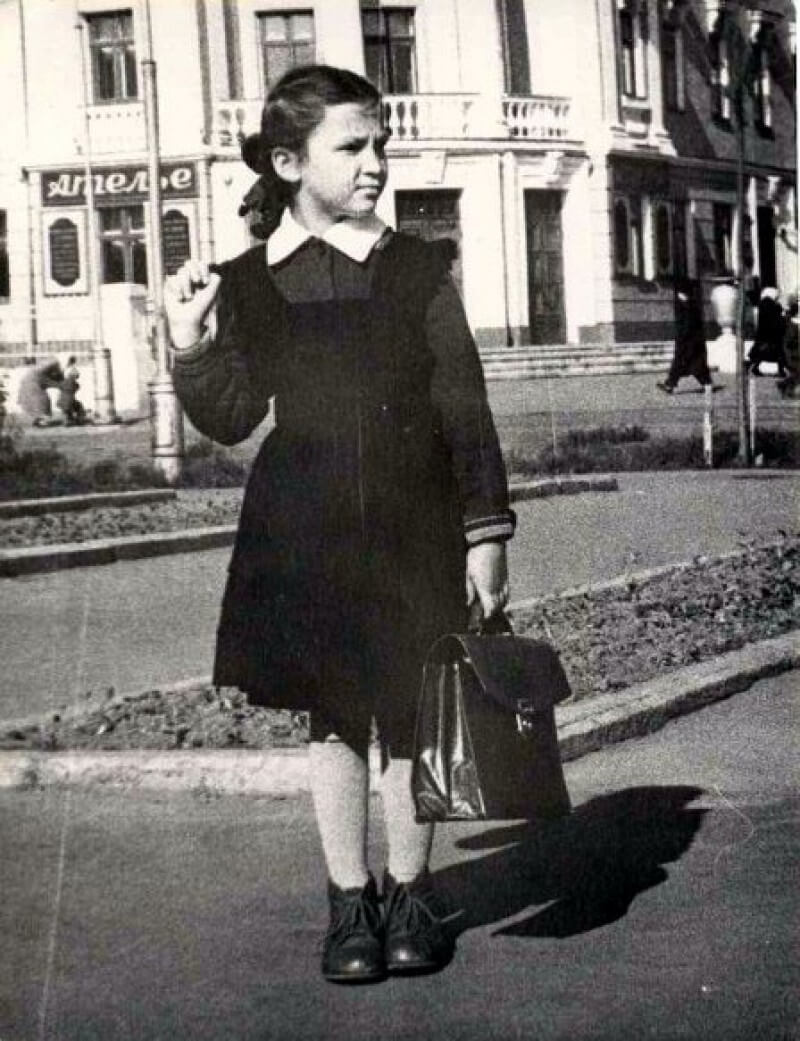
Important! The students' hairstyle was strictly specified: a braid with a black, brown or festive white bow. Haircuts for girls were not allowed!
This option lasted until 1962.
During the Thaw
September 1 1962 year, the boys returned to their desks in updated costumes. The main change is the absence of the “spirit of war”.
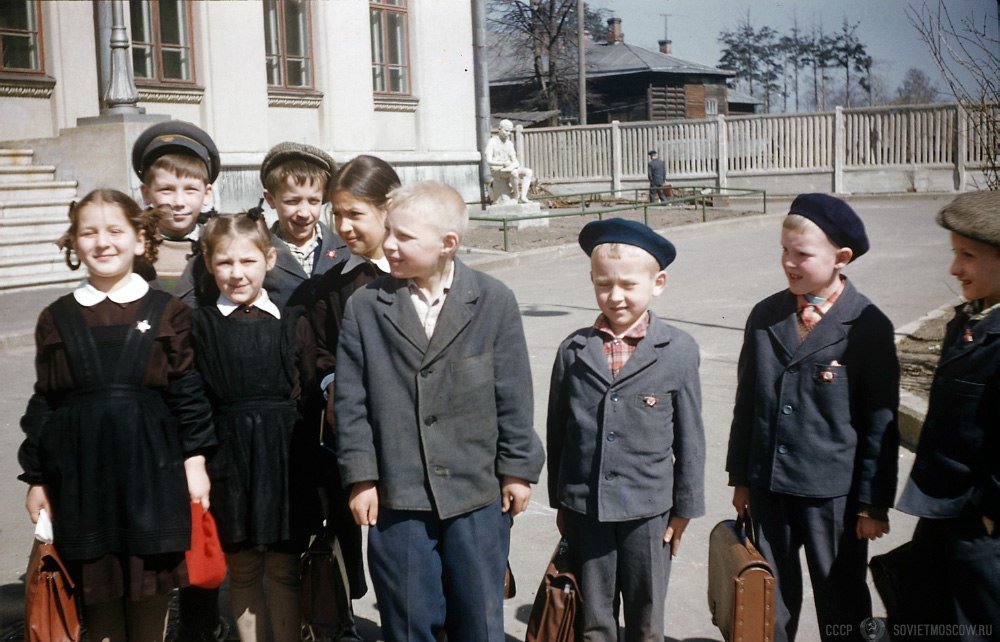
Reference. The boys' costume was no longer wearing a tunic or a wide belt. Caps with cockades were replaced by dark blue berets.
The uniform began to be sewn from wool. The color scheme was still gray: jacket with three buttons, trousers of a classic cut. A light, plain shirt was worn under the jacket.
The dress for girls remained unchanged.
70s
Colors were added for boys, length was reduced for girls. A decade later, clothing for schoolchildren has changed again.

Boy's trousers began to sew from blue half-wool fabric.
Reference. The cut of the students' outerwear resembled fashionable denim jackets. A small emblem is embroidered on the sleeve, which depicts an open book and a rising sun - a symbol of enlightenment.
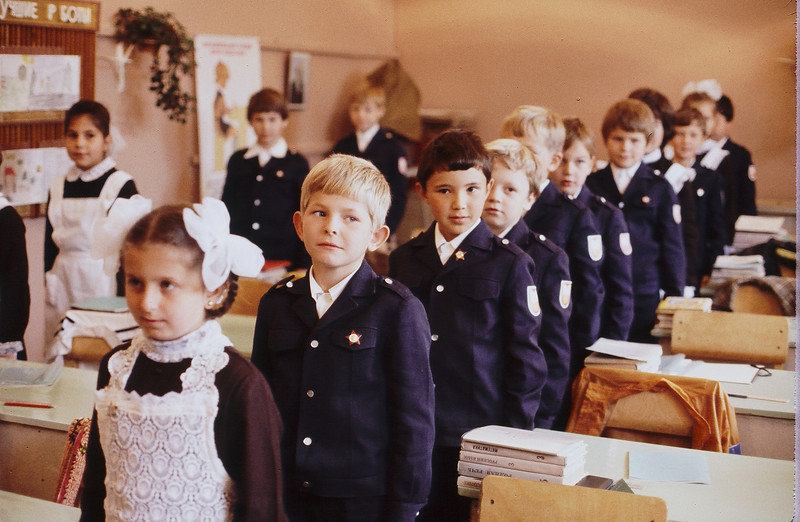
Wearing badges was mandatory. Primary school students had the October badge, middle school students had the Pioneer badge, and senior schoolchildren had the Komsomol badge. There was also a special one among them - “For active work.” A among the pioneers tied on the chest red pioneer ties.

The only change in girl's clothes during this time it became dress length. It was made a little shorter than before.
The 80s canceled the dress
Student clothing has undergone a significant transformation in 1984 year.
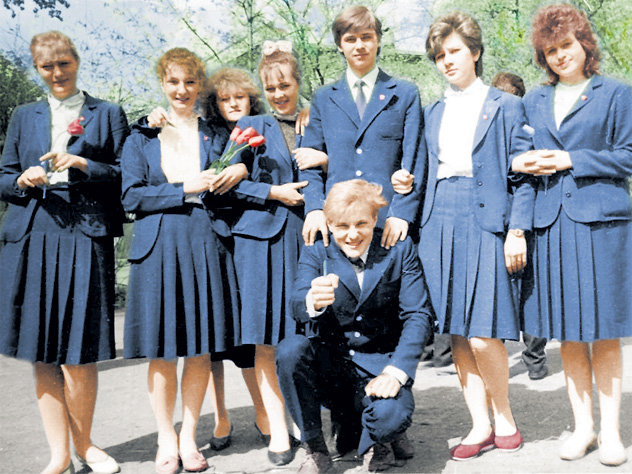
Important! The traditional brown dress was replaced by a blue suit.
Schoolgirls began to wear pleated skirts, vests and jackets, which were decorated with newfangled patch pockets.
Recent changes to the Soviet school uniform
- 1988 year: clothes for schoolchildren began to be allowed different variants depending on the region. Cold winters for girls It was allowed to wear trousers instead of a skirt. This concerned the Far North, regions of Siberia and the Leningrad region. The rules regarding hairstyles have also been relaxed. For boys, trousers with a jacket were replaced by blue pantsuit.
- 1991 year: from September 1 wearing a uniform has become optional.
- 1994 year: the abolition of rules regarding school clothing at the legislative level.
What do Russian schoolchildren wear?
Attitudes towards school uniforms have changed. For several years it simply did not exist.
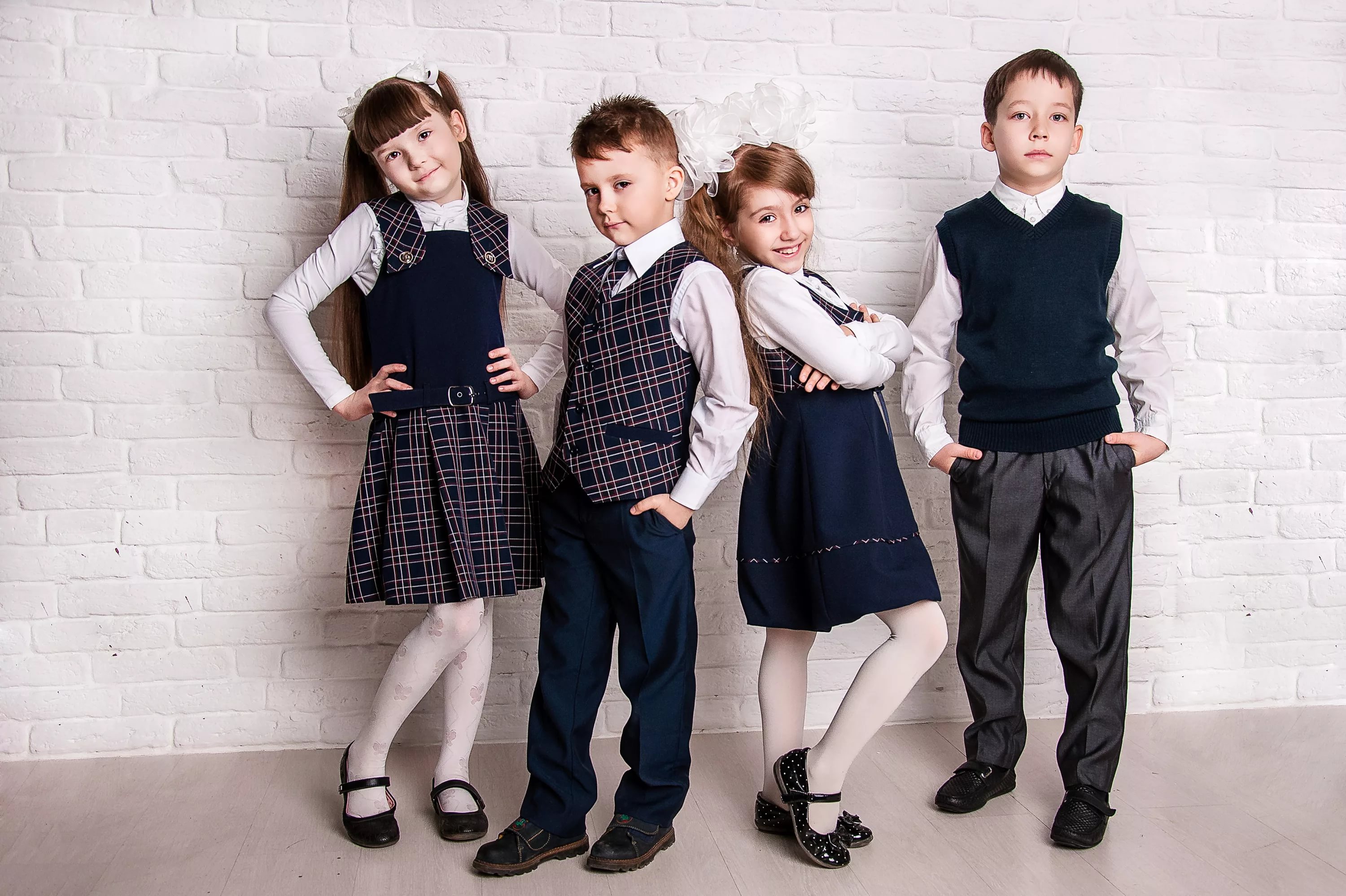
Reference. On September 1, 2013, school clothes began to return to the lives of Russian schoolchildren, but only at the level of individual educational institutions.
They can install casual, dress and sports uniforms. This is reminiscent of corporate clothing that distinguishes schools or individual classes.
Important. Currently, there is no uniform form for all educational institutions.
In one school, the management recommends “white top, black bottom”; in another, it establishes a single uniform for a specific class. Jeans are banned in many institutions. This and other prohibitions are specified in the school charter.
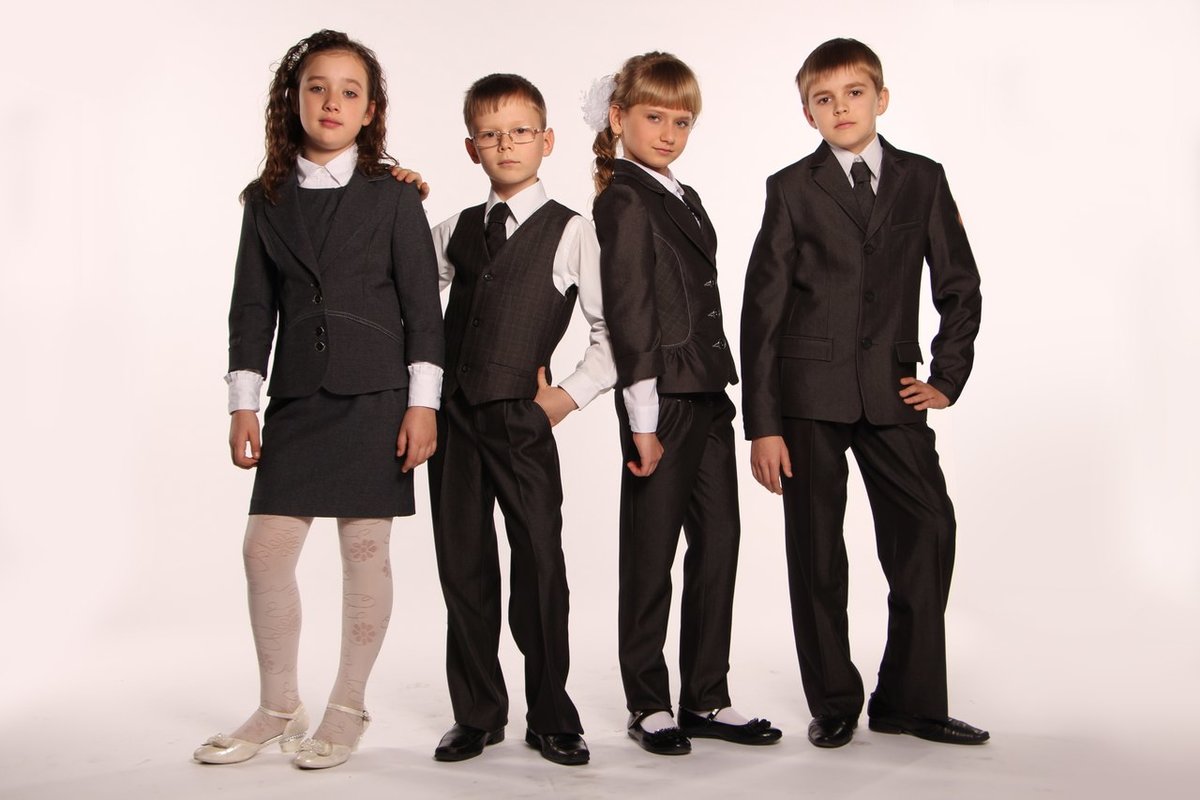
Reference. By 2020, the government plans to approve a national standard for schoolchildren’s clothing and establish requirements for the quality of the material.
It is assumed that it will be more comfortable for a child to be in “breathable” clothes all day.
Which uniform is better: Soviet or Russian?
The controversy surrounding school clothes continues. This topic is being discussed not only at the country level, but also among parents and students themselves. At times the question arises whether to return to the traditional form. Is it worth doing this? Was the Soviet uniform so good and comfortable?
Advantages of the Soviet uniform
The main advantage of the clothes of Soviet students was that they were uniform. This approach had several advantages:
- uniform disciplined;
- a single style made social inequality less noticeable;
- the established form made it easier for parents to prepare for the new school year.
Flaws
At the same time, one cannot help but see the disadvantages of Soviet-era school clothes.
- Uniformity did not allow for individuality, which teenagers did not like.
- The chosen style did not take into account fashion trends, and therefore was perceived by high school students as old-fashioned.
- Students did not have the opportunity to make changes to the uniform, for example, to take into account the season or changes in weather.
It is hardly possible to definitively answer whether the old form was better. And what do you think?


 0
0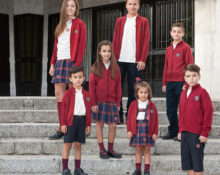

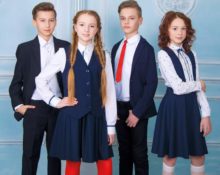
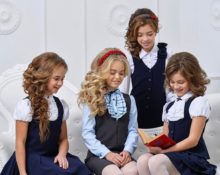
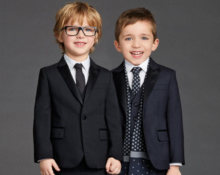

Let me touch on the “disadvantages”.
They are far-fetched.
“At the same time, one cannot help but see the disadvantages of Soviet-era school clothes.”
1. Uniformity did not allow for individuality, which teenagers did not like.
Uniformity disciplines because it does not distract from classes. People go to school not to show their individuality in clothing, but to gain knowledge. No one forbids a teenager to express his individuality with a culture of communication and excellent grades at the board, breaking away from the gray mass of C students.
2. The chosen style did not take into account fashion trends, and therefore was perceived by high school girls as old-fashioned.
People don’t go to school to watch and demonstrate fashion trends.
3. Students did not have the opportunity to make changes to the uniform, for example, taking into account the season or weather changes.
Nothing like this. No one forbade dressing warmly in cold weather, choosing shoes according to the season, or throwing on a raincoat. In very severe frosts, classes could be cancelled.
The Soviet uniform was made only from high-quality materials, which means it was better than the modern one, the quality standard of which has not yet been determined. Everything else is idle talk about fashion, about style.
I don’t understand the monotony of Soviet-era uniform styles
are we talking? The only thing that was the same for everyone was the color and quality of the material from which the uniform was sewn. The style of the form was different. Some have a tatyanka dress, others have a pleat, others have pleated dresses. And the shape of the collars was different: some had a toe, some had a rounded toe, some had a stand-up collar. Most had the clasp in the front, which was more convenient, and some had the clasp in the back. The styles of aprons were also very diverse.
It’s not true about hairstyles in the USSR. Girls wore haircuts back then and they were very short. Why lie, I have a great photo too
“A student is coming” - this was the pride of the country. The child was brought up in the spirit of rules of behavior; it was forbidden to be a hooligan, for example, to offend cats or tease dogs along the way. An unkempt appearance caused a reaction from others; one could ask which school he was from and call that school. In short, there was discipline on the street and at school. I worked from 1964 to 2008. The students were wonderful in the past and creepy, looking like psychiatric patients - today. I am in favor of their parents teaching them at home. So let them teach it to their children. Exams must be
as strict as possible. There is no point for any ignoramuses to receive higher education. Let them go to vocational school.
Children now do not understand why they go to school. They think they are playing. That their teachers should entertain...Or they themselves should not receive knowledge, but play on a smartphone. They don't listen to anything, they don't do the housework. assignments because they did not understand the lesson, being distracted. they need tutors in all subjects. But our generation received knowledge at school. With your mind. In a word, this is no longer education, but help for the mentally retarded. In each class, in each student group, only those who want and can study should study. The rest - march to the servants: to become cooks, hairdressers, these idiotic managers. Or it’s normal to acquire a manual labor profession. In these, your room cleanings. Give them a higher salary, and they will fall behind in education.
I went to school in 1960. He was equipped with a jacket, trousers, shorts - all made of gray wool, a beret - he categorically refused, only a cap with a coat of arms!
Shorts in 1960? In Leningrad, boys only had short pants in kindergarten. I also went to school in 1960. The uniform was like that of high school students under the “old regime.”
I agree 100% with the first two advantages of the school uniform. The girls wore different hairstyles. And braids, and ponytails, and haircuts. In the seventh grade, I had my first gavroche haircut at school. The boys' haircuts are a bit off. I still feel sorry for my classmates in junior high with their cropped heads and forelocks like pony bangs. In high school, some teachers (there were not many of them) began to pester the boys about the length of their haircuts. But this was already to the taste of every teacher. My classmates always kept their haircut length within reasonable limits.
The author does not fully understand the material. I went to school from 65 to 75. The girls' uniform was COMFORTABLE (by the way, it was made of CASHMERE!) IT WAS NOT THE SAME. The dresses were fitted, pleated, straight, pleated - many different styles. Any collar could be sewn on them. Yes, they were the same color. But they did not interfere with the expression of their individuality, perhaps because this word then meant something else, and not just self-expression in clothes. And the boys’ uniform allowed them to move, and not like now - the materials are artificial (greenhouse), if you move a little, your shirt sticks out either from your trousers or from under your vest.
During the time I was at school, the uniform changed three times. I lived in Estonia and graduated from school in 1988. Our second uniform was completely denim and looked very stylish. And there was variety: sundresses, skirts. vests, trousers. And in high school there were cute pleated plaid skirts, jackets, and fitted vests. The main thing is that mothers can adjust it to fit the figure so that it fits well, and not everyone could or was able to do this. So everything was fine with the uniform; in general, schoolchildren should wear a uniform, and not spend half the day figuring out what fashionable rag to put on themselves tomorrow to make everyone jealous. Look at how college students dress abroad; they all have uniforms. Even the princes.
Why do you have girls and boys from different eras in your second photo? A girl with a pioneer tie, and next to her are high school students with royal buckles?
Inaccuracy - I myself witnessed the introduction of Thomas in the 1970s.
In fact, it was introduced in 1976, before that they wore suits of different colors and styles: I went to the first grade in dark green with shiny buttons, and to the second in gray checkered.
And in the third grade I had to wear the hated blue jacket - a disgusting jacket with shoulder straps and no lower pockets, aluminum buttons with “graining”. I was especially infuriated by the lack of lower pockets on the jacket - only the upper ones, small and with flaps that could not be fastened. Women don’t understand what normal pockets mean for men, even small ones - you can put ... yes, you can put anything in there! Moreover, there is a red vinyl chloride shield-emblem on the sleeve - it was painted with a ballpoint pen and torn off at the first opportunity. Those who wore the emblem were teased as “incubators.”How I hated this jacket! After wearing normal jackets in the first grades, this change of clothes was a blow to one’s taste and self-esteem.
The long jacket of a normal cut with patch pockets, which you attributed to the 1980s, was actually introduced at the same time, in the same 1970s, but they were made in larger sizes - in fact, they only grew to size in the 8th grade. Everyone tried to beg their parents for a suit quickly - let the sleeves hang, but just not wear a nasty jacket without pockets. It was just happiness, after a disgusting jacket, to again get a slightly too big, but NORMAL jacket, it even had one inside pocket.
However, in the 10th grade (1984) a new relaxation came out. the teachers began to “not notice” the massive violation of the dress code - we again put on multi-colored jackets of fashionable styles, for example, I wore a two-color three-piece (Czech production!) in line with a light gray checkered (also Czechoslovakia) suit. I wore them in my graduation photos and during my first years at the institute... the Czechs sewed well, the jacket from the “troika” is still hanging in the closet...
Uniform in high school is MANDATORY and REQUIRED!
It IS in all Countries of the WORLD - (civilized)!
Lumpen and wild I don't take it! Who is not in PRADA is a radish?
UNTIL THE REAL has arrived in the Russian Federation - like in the UK, SEPARATION OF CLASSES - A uniform is necessary!
By the way, at Eton - the uniform is also worn by the descendants of the Dukes, and by THOSE who got there WITHOUT the Dukes!
PS – And spanking was only abolished in Great Britain in 1968!
Flog Prince Charles, John Lenon and (future Sir) Cliff Richard and Mick Jaeger (especially!) - BUT - WHAT PEOPLE GREW ???
PPS: IN THE RF – POORING URGENTLY NEEDS TO BE INTRODUCED! URGENTLY! And not some kind of “political correctness”!
You idiot! Sorry, I don't know your gender. I'm not talking about the fact that you think that the uniform is mandatory. I'm talking about spanking. It's rude, cruel, immoral. Hitting children at school is not normal! “What people have grown up,” you said. I believe that spanking, on the contrary, will turn a child into an insecure and uptight person. With such views on the world, you need to work as an executioner or animal killer in a slaughterhouse.
I'm so tired of people writing articles on the Internet press with blatantly incorrect information in them. Well, what kind of nonsense is this: “The dress was abolished in the 80s”?! Who canceled it?!
The uniform of the 70s with a dress was worn without fail until the end of Soviet power throughout the country!
And the uniform of the 80s, which the author describes, “schoolgirls began to wear pleated skirts, vests and jackets,” was intended only for the senior classes: 9th and 10th.
All other classes continued to wear uniforms developed in the 70s.
Irina Semyonovna, I studied at school during Soviet times. I’m afraid that your memories of that era in the spirit of “the student is the pride of the country” and “it was impossible to tease animals and misbehave” are nothing more than a manifestation of irrational nostalgia that obscured the real state of affairs at that time. In Soviet times, schoolchildren behaved like hooligans, hurt animals, wrote on walls, wore unkempt uniforms, beat each other, and did everything that schoolchildren do all over the world. It was absolutely impossible to imagine that someone would stop a schoolboy on the street for looking unkempt and start calling him at school because of this. You lived in some kind of alternative reality, honestly.And your opinion about modern schoolchildren as “psychiatric patients” is simply insulting.
The new uniform was not in 84, but from September 83. The skirt was not pleated, but with pleats in the front. And there were two options. One is classic, the other is sporty. Very comfortable and beautiful. For grades 9-10.
My third grade son today wears his dad's school jacket from the 80s. The trousers are worn out. Satisfied walks warmly speaks